Rose "Rosarium Utersen": features, planting and care
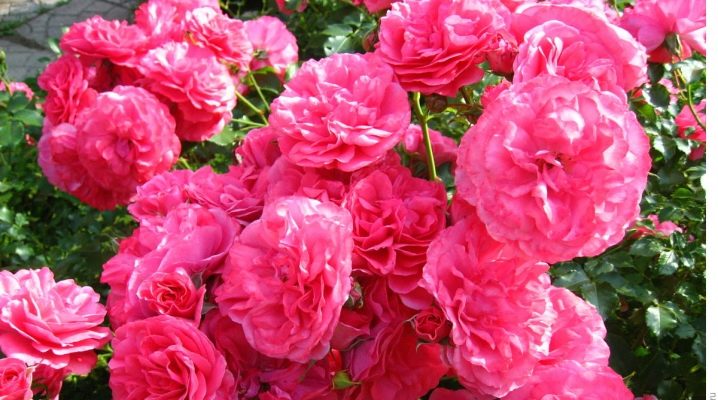
The climbing rose is a common garden decoration. Compared to bush varieties, they can not only become part of the flower arrangement, but also decorate fences, gates, hedges. There are many varieties of climbing roses that can be grown even in regions with harsh climates, and one of the popular varieties is the Utersen Rosarium.

Description
The variety was bred in 1977 by the famous German rose growers Kordes. Large buds were not particularly interested in gardeners, as they seemed out of date, reminiscent of the magnificent dresses of the ladies of the Victorian era. For the next 23 years, the variety was forgotten, but in 2000, with the advent of vintage fashion, it became popular again. Since then, it has only strengthened its position in the flower market.
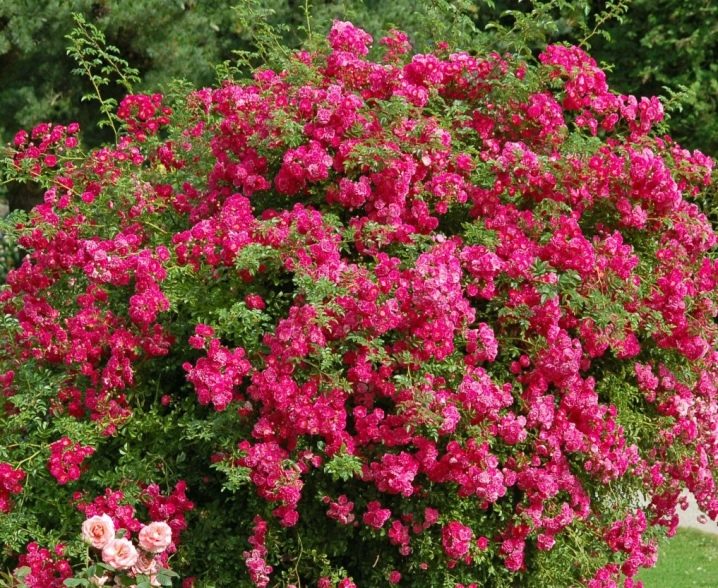
The variety belongs to the climber group, which means a climbing plant with repeated flowering. This species is characterized by elongated shoots and large buds. Growing is possible not only in warm climates, but also in the middle lane, for example, in the Moscow region.
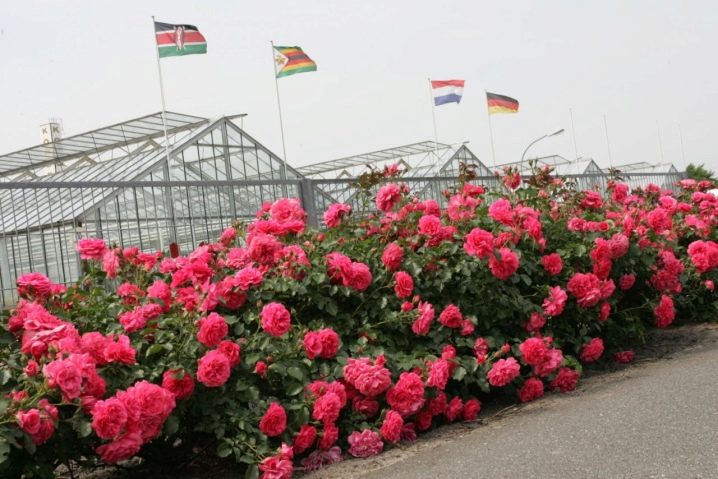
The bush is voluminous, lush, it is quite high - up to 4 meters, it grows 1.5 meters wide. The stems are quite thick and prickly. The thorns are long and thin, hardly noticeable in the foliage, so experts recommend working with the variety with thick gloves. It can be grown both in the form of a bush and as an element of a hedge. You can plant a rose in the form of a trunk.
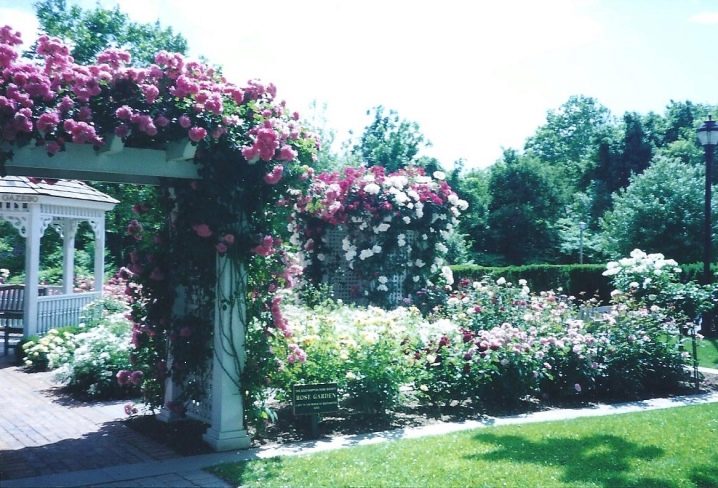
The beginning of flowering is characterized by the density of foliage and the splendor of blossoming flowers with bright crimson or dark pink petals. Roses are arranged on brushes of 3-7 pieces. During flowering, the buds gradually become silvery. One flower in its prime has a diameter of up to 12 cm, it is decorated with hundreds of petals.
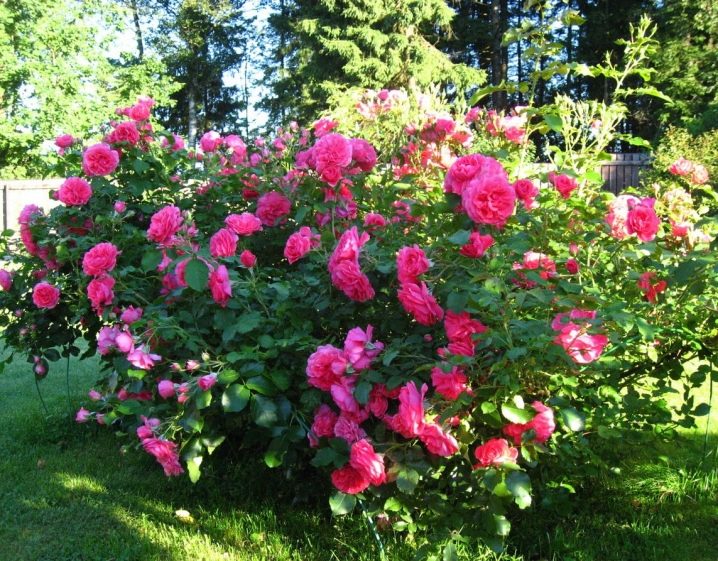
The first wave is considered the peak, it is at this time that the rose grows as much as possible. Each re-bloom will produce fewer and fewer flowers. The last wave usually occurs in mid-September, at which time the bush can give only a few buds. The fragrance of flowers is light, delicate, you can feel the sweetish aroma of wild rose and apple in it.
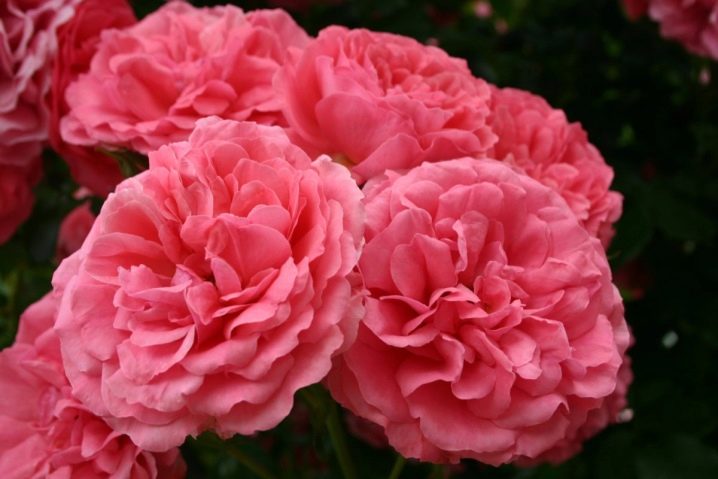
The main advantage of the variety is its high immunity and resistance to the most common diseases. In addition, this variety can be planted in difficult climates, for example, in a region with constant rainfall. When choosing a site, there are no special rules, the culture will grow well both in a lighted place and in partial shade. The disadvantages include the abundance of inconspicuous sharp thorns, as well as the need for a garter to a strong support, otherwise the stems bend to the ground. The downside is the need for a bush for shelter for the winter.
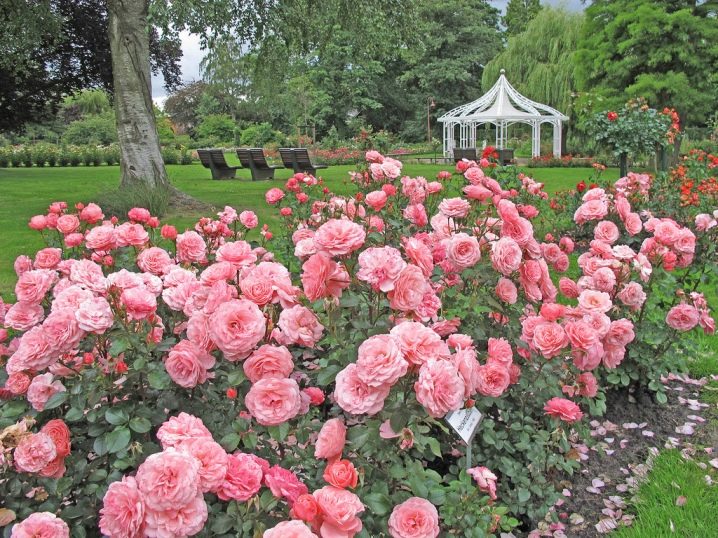
Landing
When choosing a place for planting, the illumination of the site does not matter, but it is important that the lawn is protected from the wind. The shrub will grow better in fertile light soil. A small slope in the south or southwest is suitable for growing roses. It is recommended to choose a place away from tall trees, and also not to consider a lowland for planting, where water will stagnate.
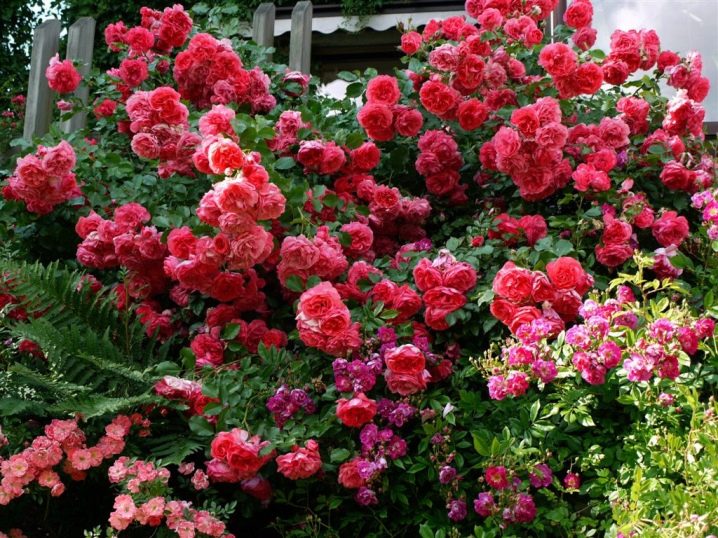
When choosing a seedling "Rosarium Utersen" on the market, give preference to strong, reliable shoots with a root system of a uniform color without deformations on the surface.The root collar of a healthy specimen has a dark green color; each stem should have 2-3 strong shoots.
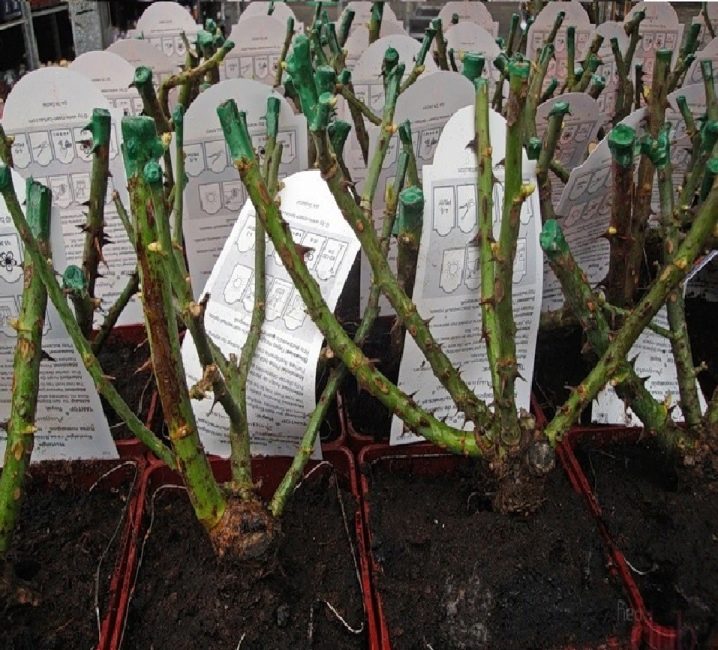
Before starting planting, it is necessary to remove the roots of the planting material up to 20 cm and place it in water for several hours. This procedure will allow the plant to become saturated with water, due to which it quickly adapts to a new place. It is better to plant a rose in the fall, but a young September sprout needs to be mulched, for example, with humus or non-woven material. Then follow these steps:
- dig a hole to a depth of 50 cm;
- put some kind of organic fertilizer on the bottom, for example, rotted manure;
- moisten the planting site well;
- place the shoot in the hole so that the root branches do not interfere with each other and can grow freely;
- fill the hole with soil so that the root collar is 5-6 cm above the ground.
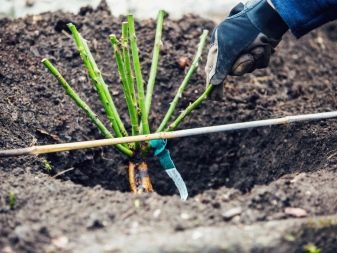
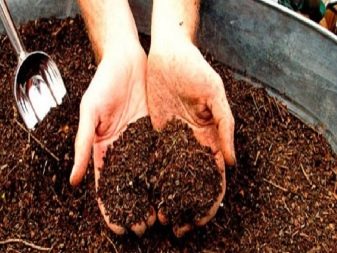
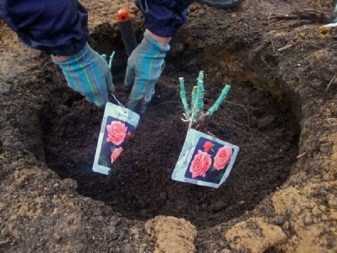
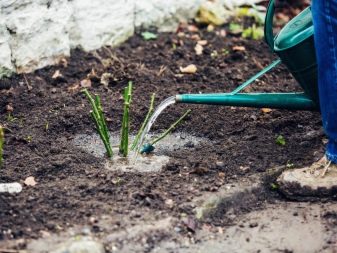
Care
When growing the presented variety, adhere to the following rules.
Watering and feeding
The first two years are the most important plants in life. The culture requires weekly watering. It is enough to pour out a bucket of warm water at a time. The amount of watering should be doubled during dry weather.
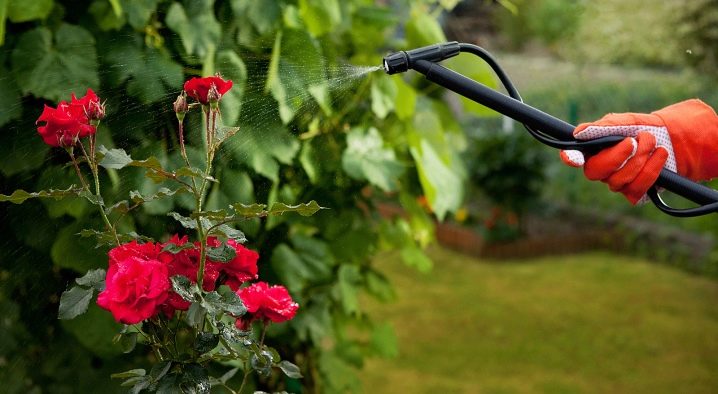
The first fertilizers are applied in the first year at the end of May. You can use specialized mixtures designed for flowering plants. In the summer, the shrub is fed several more times at intervals of once every two weeks.

For adult bushes, which are more than two years old, three additional dressings per year are enough. The first time the rose is fertilized after the spring thaw, then during the flowering period, the last feeding is carried out after the bush has faded. It is recommended to feed a two-year culture with a fertilizer that contains nitrogen. Suitable, for example, mullein, bird droppings, ammonium nitrate. It is necessary to feed the plant after rain or abundant watering.
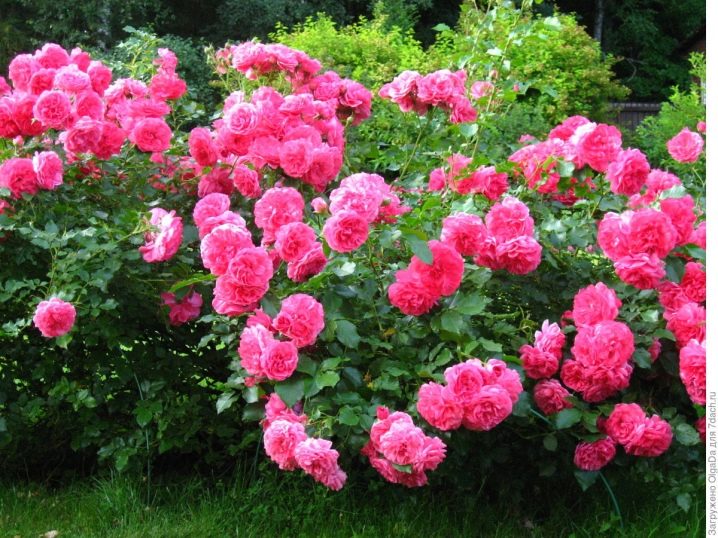
A short overview of the most unpretentious roses "Rosarium Utersen" in the video below.
Pruning
In order for the bush to produce healthy, lush flowers and look beautiful, it is necessary to systematically prune. The buds of this variety are formed on the shoots of the past and present year, therefore it is recommended to mark the most prolific stems. Weak branches need to be cut, they make the crown too thick, interfere with strong specimens.

Pruning is recommended in the spring after removing the protective cover, usually this procedure occurs in mid-April. It is necessary to eliminate not only weak stems that do not give flowers, but also frozen shoots. The manipulation is carried out with a sharp secateurs very carefully. If, before and after each pruning, the tool is treated with an antiseptic, then the risk of infection of the shrub will be significantly reduced. It is better to burn old cut branches - this is another method of disease prevention.
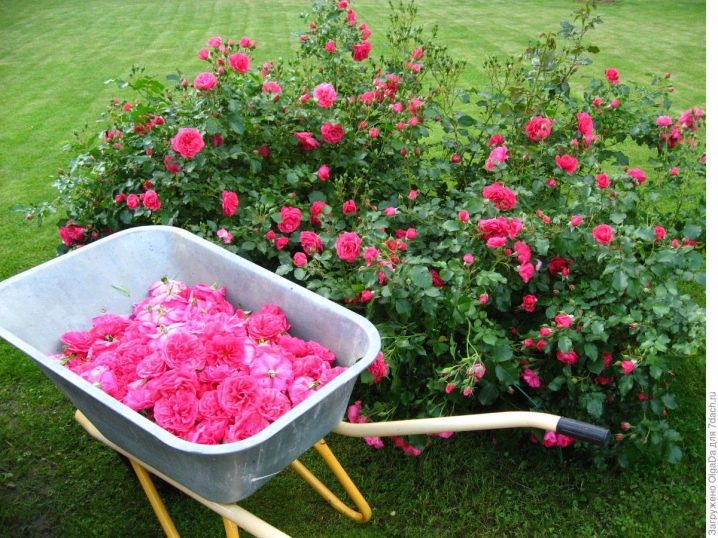
Preparing for winter
Preparation for frost begins at the end of August.
- At this time, the soil under the bush ceases to loosen, fertilizers with nitrogen are no longer applied, less often watering is carried out.
- When the air temperature drops to -5 degrees, the shrub needs to be covered with a thick film. Previously, it is not recommended to cover this indicator, as this can provoke damping and decay of the plant.
- Dry branches are removed, the stems are removed from the support, wrapped with twine and pressed against the soil, previously lined with spruce branches.
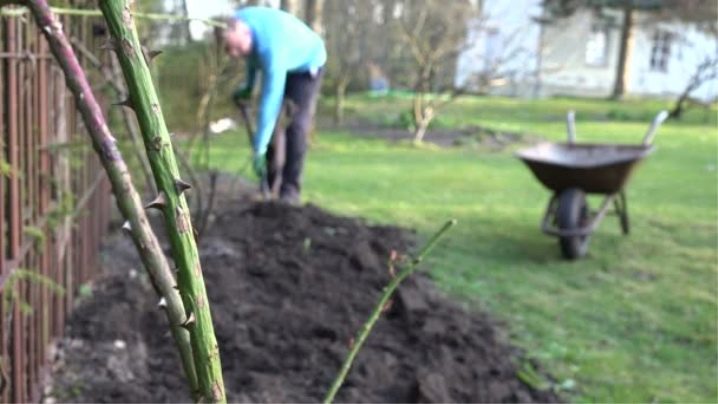
All manipulations must be carried out in dry weather.
Diseases and pests
As mentioned above, the variety is quite resistant to the most common diseases, such as powdery mildew or black spot. However, before more rare ailments, the plant is often powerless, these include gray rot and rust. These diseases affect the culture with improper care or when choosing an unsuccessful site.
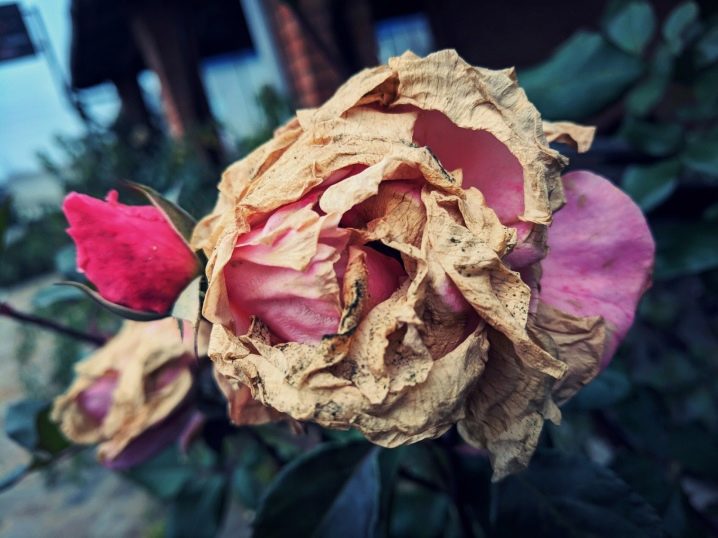
Signs of gray rot: the bush becomes brown-gray in color, the leaves are crumbling, the branches rot. When the first symptoms appear, the rose should be sprayed with copper sulfate or Bordeaux liquid. If the plant is seriously affected by the disease, then it should be transplanted to a more ventilated area. Also, the situation will be saved by treatment with "Fundazol" or "Oxyhom" twice within two weeks.
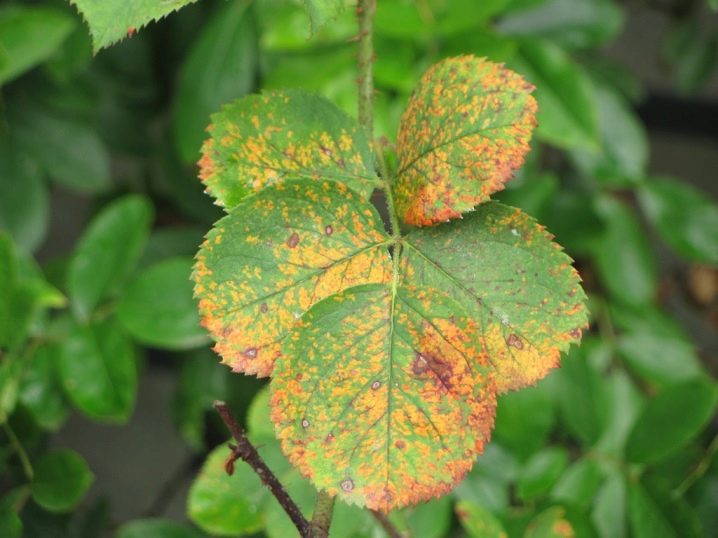
This variety is not particularly resistant to pests, it is often attacked by rose-colored aphids, leafhoppers, leafworms, spider mites. Gardeners recommend fighting these insects with special preparations "Inta-vir", "Fufanol", "Commander". It is possible that several treatments will be needed for one bush. Marigolds planted next to a rose will help scare off pests: insects are afraid of the scent of these flowers.
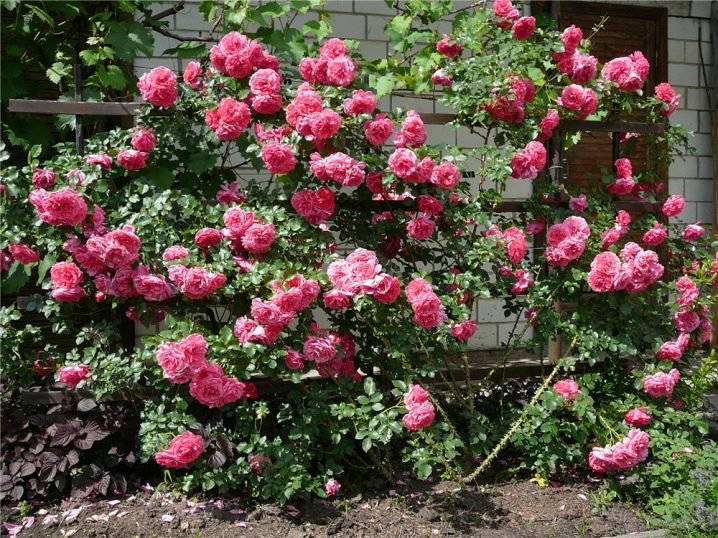
Reviews
Reviews of the variety are mostly positive. Gardeners share photos of their “pets” and give tips on growing. It is noted that the rose grows well even in the northern regions of Belarus, where frosts are down to -25 degrees. At the same time, she hibernates in such a climate without shelter. Some gardeners who have launched the site note that sometimes the rose begins to bloom for no reason at all without any care. In this regard, the variety is recommended for cultivation for beginners. Of the advantages, the resistance of the variety to diseases is also noted, its very pleasant aroma, rich color of the buds.
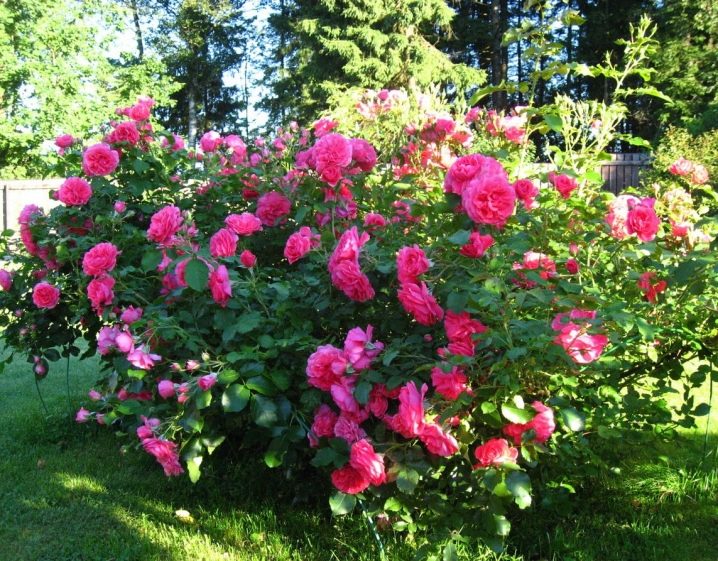
However, there are also many disadvantages. For example, the abundance of thorns makes it difficult when working with a bush. In addition, massive branches often limit the ability to form a crown. According to some gardeners, the variety is not so aesthetic compared to other varieties, since the flowers are too small for such a large volume of green mass. Such aesthetes prefer to grow this rose variety in the form of a shrub.
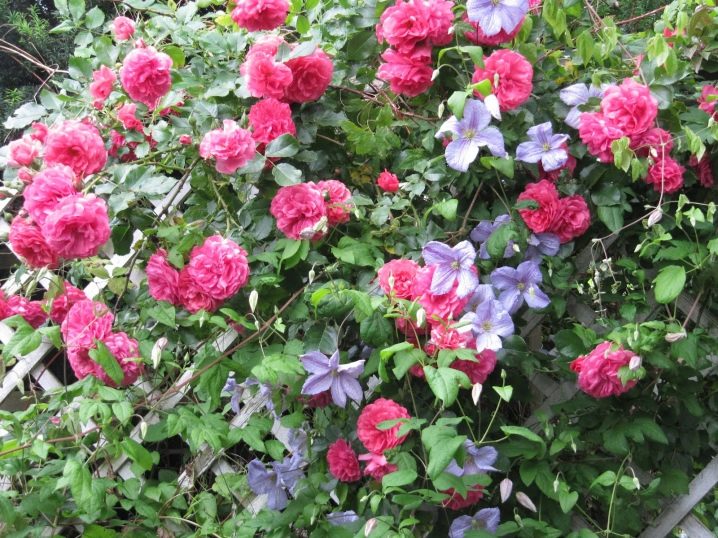
Use in landscape design
"Rosarium Utersen" looks beautiful both in the case of a bush planting, and when tied to a support. A fairly common option in landscape design is to put roses around the edge of the gazebo. This will be a real paradise, which is written about in fairy tales. The same effect can be achieved by placing the shoots along the terrace railing. If you put branches along the trellises, you can thus visually divide the site into several zones, while the borders of each will exude a sweet aroma.
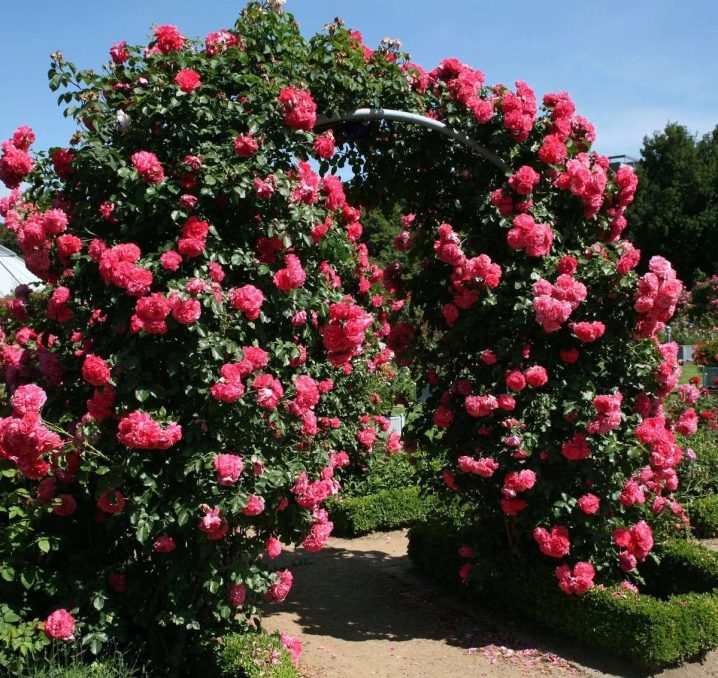
If the above listed methods seem slightly pretentious, then you can simply plant the culture in a separate bush, which will become the main decoration of the garden and will rise above the rest of the flowering plants. If an unsightly outbuilding is installed on the lawn, which cannot be removed in any way, then you can hide it under pink branches. Also, many gardeners place whips on the facade of a building that has any defects - pink buds and dense foliage will hide any flaws. For the same purpose, roses can be stretched around dead trees and bare posts.

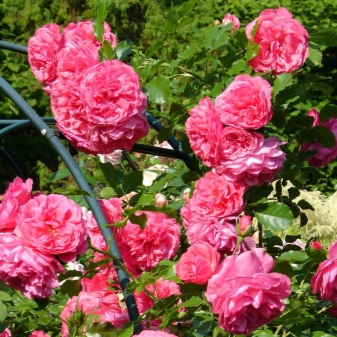
If you plant a culture on a trunk, then it will be a small tree with a rounded crown, strewn with bright buds. Such compositions will look beautiful along the garden path. If there are few specimens, then you can put two trees opposite each other along the edges of the entrance gate.
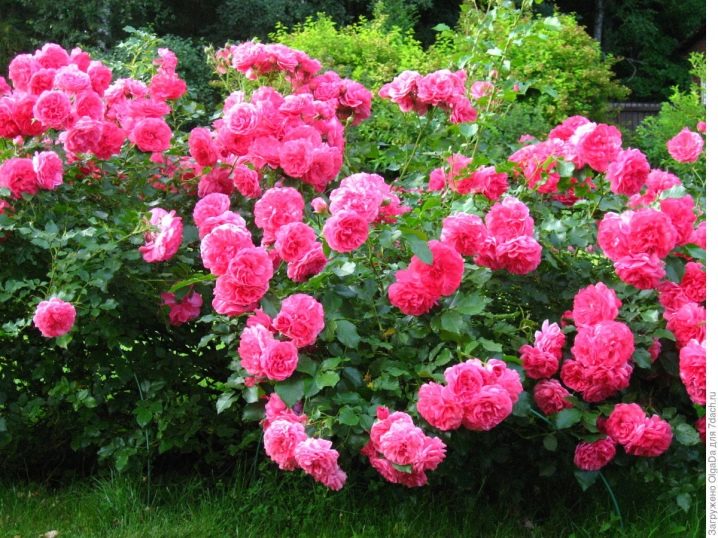
Rose in any form will be beautifully combined with blue-purple plants, for example lavender, bells, pansies growing at the foot of the shrub. Very delicate pink flowers will look next to white and blue. Evergreen trees look beautiful next to climbing roses. It is recommended to avoid red and orange shades near the rosebush - these are not very good combinations.
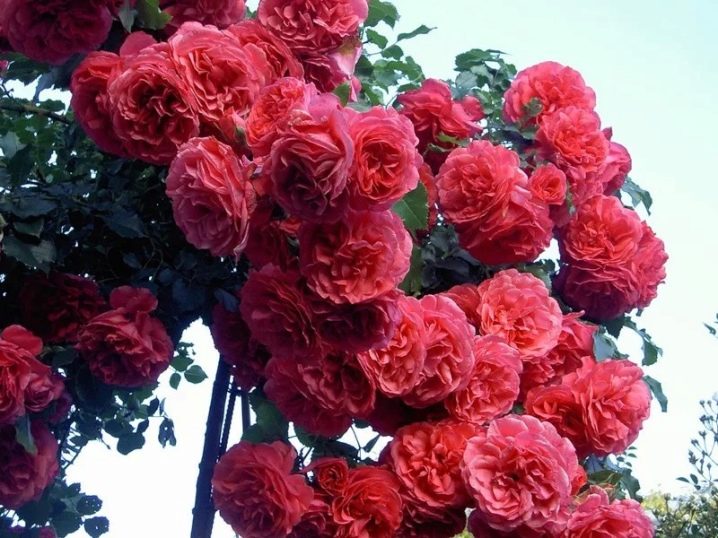

































































































The comment was sent successfully.